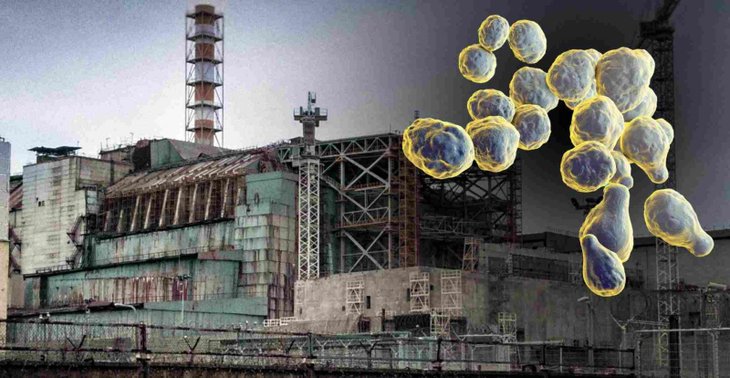This Fungus From A Nuclear Power Plant Can Protects Astronauts On Mars
Dhir Acharya - Jul 29, 2020

Scientists have come up with the idea of building shields out of radiation-absorbing fungus that grows near the Chernobyl Nuclear Power Plant.
- Believe It Or Not, Dirt From Mars Can Be Bought With Only $20 A Kilogram
- The First Space Hotel In The World Will Welcome 400 Guests
- Startup Builds Vehicle With Soviets Tech To Collect Space Garbage
If we want to live on Mars, traveling there will be the smallest problem. Another more concerning issue is protecting humans from the deadly cosmic rays that are very harmful. To overcome this issue, we need innovative, smart solutions.
Scientists have come up with the idea of building shields out of radiation-absorbing fungus for astronauts. Especially, the fungus grows near the Chernobyl Nuclear Power Plant.

Testing on the International Space Station
Researchers from Stanford and John Hopkins University reported the idea after finding that the fungus could block some cosmic rays in a test on the ISS. With the fungus Cryptococcus neoformans, a 2-millimeter sample could block and absorb 2 percent of the cosmic rays hitting it on the ISS. This rate doesn’t protect astronauts but they tested only a very thin sample.
Self-replicate, self-heal
Initially, the fungi was found growing on the walls of the now-defunct Chernobyl nuclear reactor that had a lot of gamma half a decade after the disaster.

According to the study co-author and Stanford researcher Nils Averesch:
“What makes the fungus great is that you only need a few grams to start out, It self-replicates and self-heals, so even if there’s a solar flare that damages the radiation shield significantly, it will be able to grow back in a few days.”
A potential sunblock against cosmic rays
NASA research scientists Kasthuri Venkateswaran, the lead of the experiments on the fungus, said that it could act as a “sunblock” to protect humans from toxic rays after they extracted its radiation-absorbing power, turning it into a drug.
The fungus could also help airline pilots, cancer patients, as well as engineers in nuclear power plants to lead a safer life without being afraid of absorbing harmful rays. It could also be used for a hybrid material to make spacesuits.

What’s the safe thickness of this fungus sample?
According to the study, a layer of this fungus that’s 21 centimeters thick could provide protection against an amount of radiation equivalent to the Martian surface.
With new innovation every day, the path to conquer Mars seems clearer and closer.
Featured Stories

Features - Jul 01, 2025
What Are The Fastest Passenger Vehicles Ever Created?

Features - Jun 25, 2025
Japan Hydrogen Breakthrough: Scientists Crack the Clean Energy Code with...

ICT News - Jun 25, 2025
AI Intimidation Tactics: CEOs Turn Flawed Technology Into Employee Fear Machine

Review - Jun 25, 2025
Windows 11 Problems: Is Microsoft's "Best" OS Actually Getting Worse?

Features - Jun 22, 2025
Telegram Founder Pavel Durov Plans to Split $14 Billion Fortune Among 106 Children

ICT News - Jun 22, 2025
Neuralink Telepathy Chip Enables Quadriplegic Rob Greiner to Control Games with...

Features - Jun 21, 2025
This Over $100 Bottle Has Nothing But Fresh Air Inside

Features - Jun 18, 2025
Best Mobile VPN Apps for Gaming 2025: Complete Guide

Features - Jun 18, 2025
A Math Formula Tells Us How Long Everything Will Live

Features - Jun 16, 2025
Comments
Sort by Newest | Popular